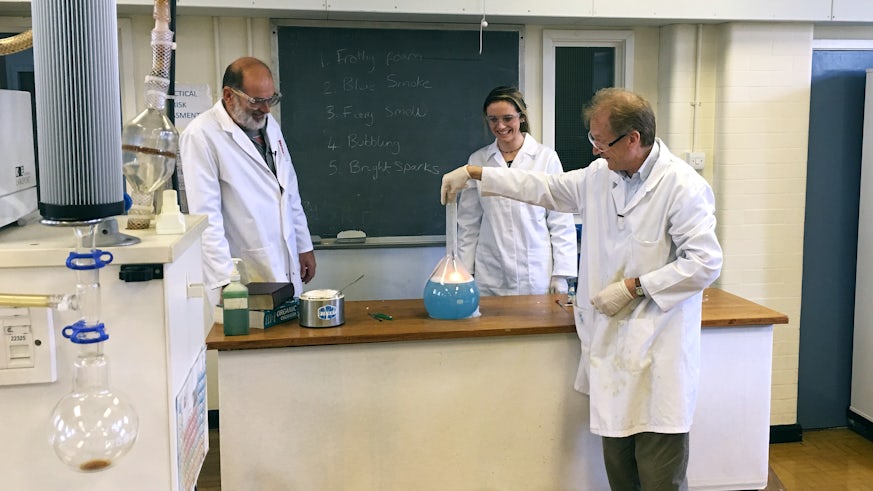A marvellous medicine
13 September 2016

Researchers from the School of Chemistry have paid homage to the world’s most-loved storyteller by recreating a scene from one of his famous books, George’s Marvellous Medicine, using real-life chemistry.
Celebrating the 100th anniversary of the birth of Roald Dahl, the team of chemists have brought the author’s work to life by taking simple concepts from chemistry and using them to recreate the sights, sounds and smells that George cooks up in the kitchen as he prepares a frightful medicine for his Grandmother.
From frothing foam to fiery smells and bright sparks, the team explain how Dahl’s vivid imaginations that he describes in the book can be retold in the lab using simple chemistry and simple ingredients, such as the mixing of vinegar and baking soda.
However, Dahl always had a fondness for taking his ideas to the extreme, and the chemists are quick to point out that some of the demonstrations they’ve presented should not be performed at home!
Over the past months, Cardiff University has celebrated Dahl’s centenary with a number of events looking at the significance and popularity of the author’s work.
Dahl was born in Llandaff, Cardiff in 1916 to Norwegian parents, and always ensured that both Cardiff and Wales had a vital presence in his work, a theme that was explored by Professor Damian Walford Davies, head of the School of English, in a new book that he has edited, entitled Roald Dahl: Wales of the Unexpected.